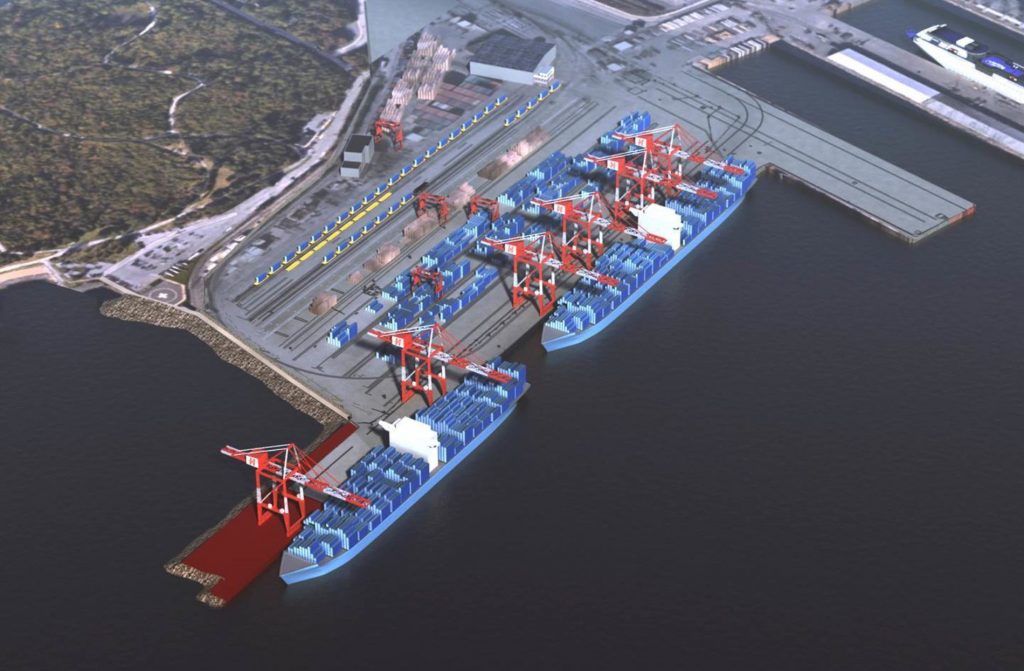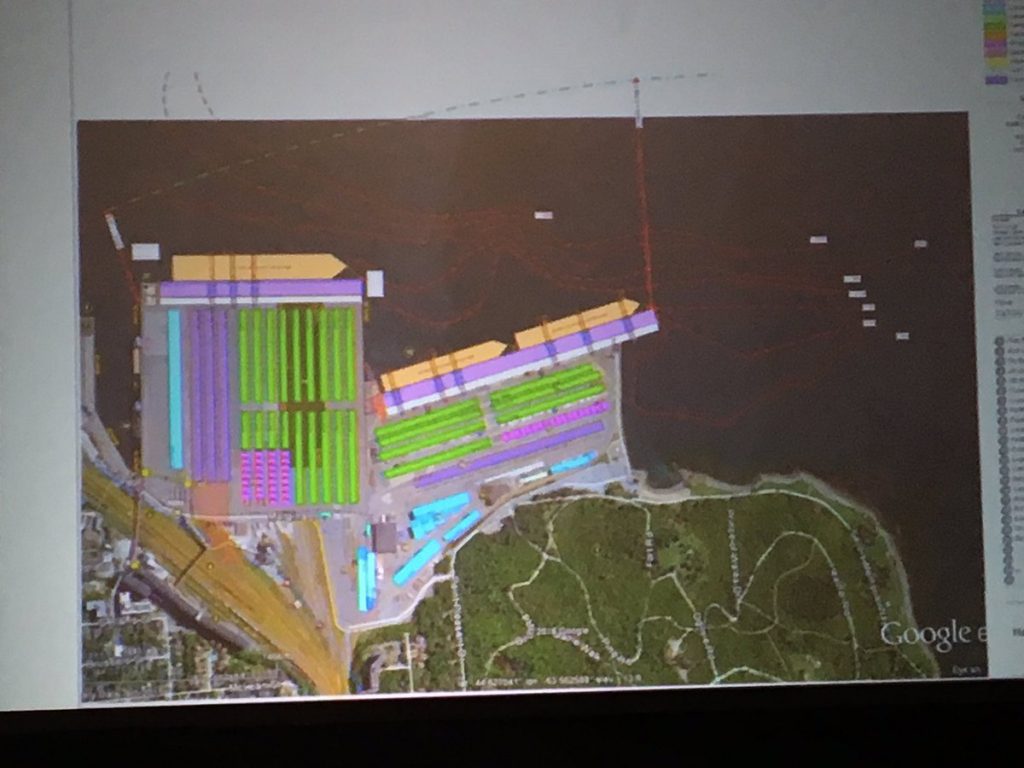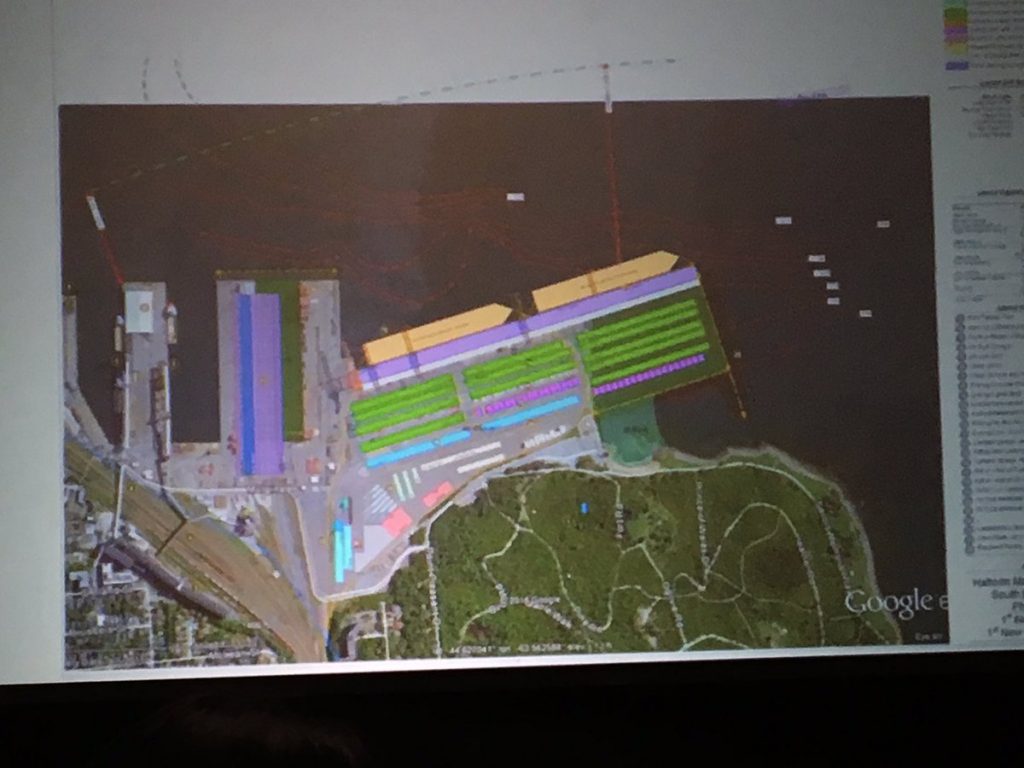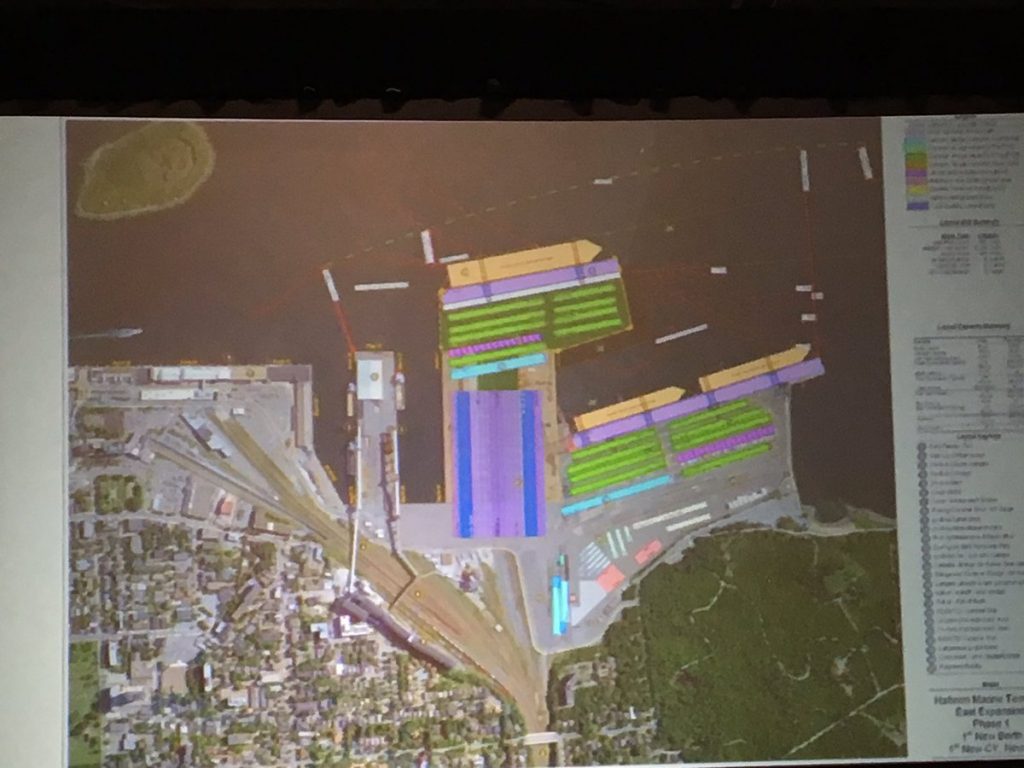
With the interm expansion of pier 42 currently underway, The Port announced its further expansion options yesterday. The Images are photos of slides taken by Councilor Waye Mason, who attended the presentation by the port, and the descriptions are mostly lifted directly from the ports website at portcityhfx.ca, with some additional comments by me.
Halterm North

This scenario involves infilling the main Ocean Terminal slips between Piers A, A1, and B, using a caisson wall that supports a new container pier, thus creating a single UCCV berth. The existing Pier C would continue to operate throughout the development phase.
This proposal would create an efficient container yard that can still accommodate dry bulk and cruise operations along the north side of Pier A. The Halterm North option can be built within the Port’s existing property, with negligible impact on navigation or on adjacent land use. This option requires the least amount of imported fill material and has the shortest development timeline of all three Halterm-based scenarios.
The Halifax Port Authority would investigate relocating users of Ocean Terminals to other locations within the Port of Halifax. This option would be the least expensive and easiest to build.
Halterm South

The Halterm South concept extends the existing Halterm berth southward with significant infilling to accommodate on-dock rail and container storage. The slip between Piers A1 and B would be infilled to create additional yard space.
Enhancement options for Point Pleasant Park were included as part of the Halterm South expansion concept. This option would be more expensive and would require more time to build than Halterm North.
Halterm East

Phase One would involve infilling the slip between Piers A and B and a new berth would be developed east of the existing Pier C. Should container volume continue to increase, the new berth would be expanded southward to increase the capacity in subsequent phases.
The Halifax Port Authority would investigate relocating users of Ocean Terminals to other locations within the Port of Halifax.This option would be more expensive and would require more time to build than Halterm North.
Dartmouth
The optimal location of a new Dartmouth container terminal was identified as being to the south of downtown Dartmouth and to the north of Eastern Passage. This location was determined by navigational issues and by land use developments along the Dartmouth shoreline. (this is essentially the imperial oil site)
For the Dartmouth concept, two rail options were considered to provide necessary rail access to the site:
- Trains running along the existing Dartmouth waterfront line
- Trains running along new track east of Dartmouth
Trains running along the existing Dartmouth waterfront were found to be impractical due to the 4200 meter length required for efficient operation. A route for a 20+ km track running east of Dartmouth was examined in detail and adjusted to mitigate property and environment impacts.
Not including rail costs and costs related to property purchases, capital cost for this option was estimated at $1.4 billion CAD in 2017, with operation not expected to start until early-to-middle 2030. This option was determined to have much higher costs, longer timeline, increased logistical/construction challenges, and significant impact on properties and residents in Dartmouth. the real costs for this will likely be north of 3 billion dollars.
Other Options
Barges
Assessed the use of barges to transship local containers between Halterm and Fairview Cove. This option would result in inconsistent movement of freight with increased exposure to weather-related delays and would add substantial operating costs to port-related goods movement
Halifax East/South Byway through Rock Cut
Extensively studied the option of moving both rail cargo and trucks safely through the rock cut. This option would require expanding the width of the rock cut to 83 feet, or 25 metres. Several portions of the rock cut would require significant alteration (excavation and blasting) in predominantly residential areas. It would also require the rebuilding of 13 bridges and one rail bridge, plus the costs associated with design, construction and land acquisition (which would include expropriation) for a new highway intersection in the North End.
Halifax Northwest Arm Crossing
Evaluated the diversion of local traffic to a new tunnel under the Northwest Arm, with connections to the west-side roads. This option would take too much time, would be cost-prohibitive, would pose significant engineering challenges to achieve the necessary 8% grade and would displace a large number of residents.
Raising the Harbour Bridges to expand Fairview Cove
Evaluated the reconstruction of the harbour bridges to increase the vertical clearance to accommodate ultra-class vessels.This option would result in significant traffic disruptions in Halifax over many years and would result in a significant timeline disadvantage when compared to other more viable concepts
McNabs Island
Assessed the option of building a new Greenfield terminal at McNabs Island.This option would take too much time, would be cost-prohibitive, would pose significant engineering challenges to develop the required cross-harbour connections for both road and rail lines, and does not have stakeholder support.

Pingback: Port Expansion Feedback is in | Halifax Shipping News.ca
Pingback: 2019 in review | Halifax Shipping News.ca